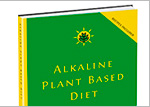Got Computer Vision Syndrome – We Have Food For That!

Got Computer Vision Syndrome? We Have Food For That! I tell you there is a label for everything, and Computer Vision Syndrome (CVS) is just a fancy term for a group of eye and related problems that result from prolonged computer use.
Overall symptoms of Computer Vision Syndrome include:
- Blurry vision from computer use
- Eyestrain
- Dry and irritated eyes
- Headaches
- Neck, shoulder, and back pains
Symptoms of CVS may be caused by one or a combination of these factors:
- Computer screen glare
- Poor lighting
- Viewing distance from the computer that is too close or too far
- Previous vision problems
- Slouching seat posture
Of course we should address and correct the factors that cause Computer Vision Syndrome, but what can we do about the damage already done to the eyes? There is hope to be found in anthocyanin phytonutrients found in plant-based foods like black currants.
This double-blind placebo-controlled crossover study, found a significant improvement in refractive values and eyestrain symptoms in test subjects of the control group who ate black currants, compared to the participants in the study who received a placebo.
“These results suggest that intake of dietary anthocyanosides may serve as a new means of preventing myopic refractory shifts during visual tasks or promoting visual recovery. If so, effects such as improvement of dark adaption and rhodospin regeneration can be added to the known visual functions anthocyanosides.”
Anthocyanins are natural plant pigments that keep blueberries blue, black currants black, blackberries black, black elderberries black, turn green cabbage into purple cabbage, and brown rice into purple rice.
Other red, blue, and purple pigmented fruits and vegetables bilberries, cranberries, black raspberries, red raspberries, and purple cabbage also contain anthocyanins.
Though the anthocyanins in other fruits and vegetables appear to be protective for the eye, the concentration and the specific anthocyanins in black currants have been specifically tested to show the protective and healing properties of Computer vision Syndrome.
One important note in combating Computer Vision Syndrome it is better to consume whole fresh black currants or dried black currants, than to use anthocyanin supplements. The whole black currants give us all of the fiber and nutrients which work together with synergy to best support homeostasis in the body. Also, supplements many times don’t contain the ingredients listed on the label.
Purchase freeze-dried black currants
Image Credit: GBloniarz / Flickr







